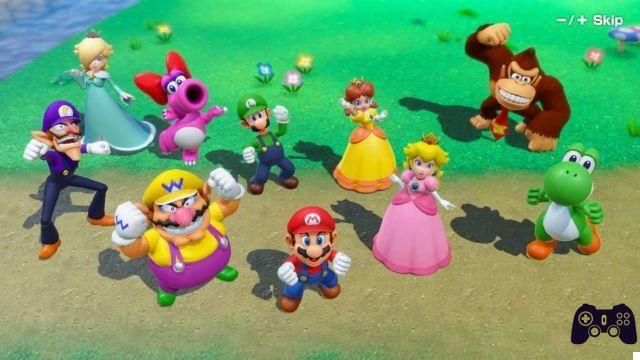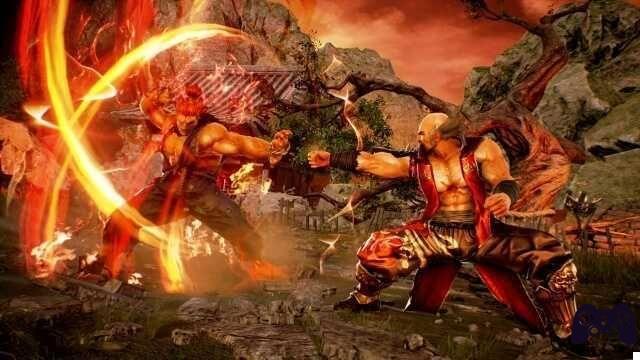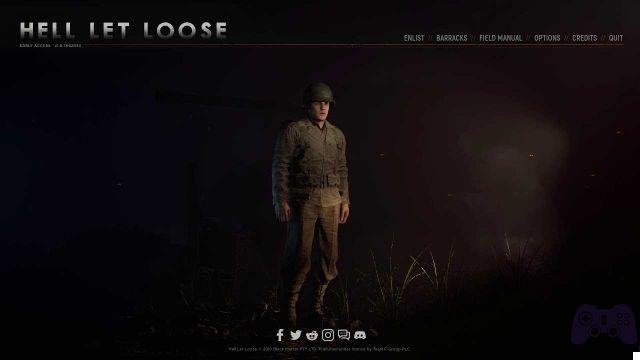Welcome back to the fourth installment of our in-depth guide to Super Smash Bros. Ultimate's stellar cast of playable characters
In this ours guide, we will devote ourselves to the many characters playable di Super Smash Bros. Ultimate, starting with Mario up to the latest additions of the second Fighters Pass. In each episode we will describe about five or six fighters, however, dividing them according to the chapter of Smash in which they made their debut. On our halfway point for rookies from Melee, today we will be dealing with Dr. Mario, Pichu, Falco, Marth e Child Link. Our lecture in the appendix will also deal with powerful attacks, or “tilt” in competitive jargon, as well as gods counterattacks.
Quick Preamble
Before moving on to the characters, let's clarify the fulcrum of the guide: in Super Smash Bros. Ultimate the task of each player is to throw opponents off the screen, fighting in arenas that mix the genre of fighting with elements of platformer (X and Y allow you to jump). The A and B keys, used in combination with the various directions, give life to the most disparate moves, as well as the back keys to manage shields, dodges and holds. The game also implements tools that irremediably alter the fate of each encounter, but in this guide we will basically focus only and only on the characters themselves. Increasing the opponent's damage will make him lighter and, therefore, vulnerable.
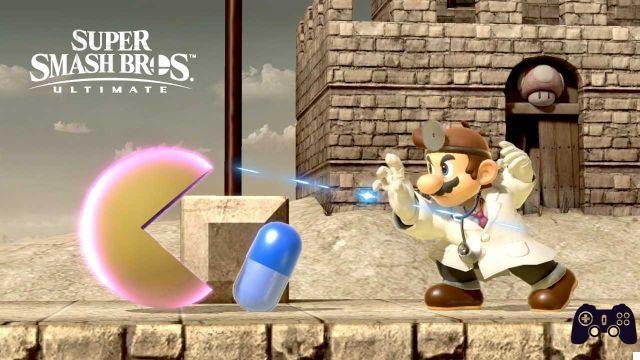
Dr. Mario - Super Smash Bros. Ultimate Character Guide
Let's start with an almost marginal character for the Mario franchise, or his alter ego well established in the world of medicine. In reality, Dr. Mario has evolved over time into a sort of parallel version of the plumber from Nintendo, as the sequel to the original puzzle game established that the hospital version of the Mushroom Kingdom is much more widespread than it initially seemed.
- Franchise of origin: Super Mario
- Origins: The puzzle game released on NES and Game Boy, Dr. Mario (1990), was based on a sort of hybrid between Tetris and Puyo Puyo (years before the two series could boast a real crossover). In each bottle, Dr. Mario had to target the three viruses (red, yellow and blue) in the bottles with the tablets corresponding to their color. Dr. Mario's mission was to find a cure for the common cold, and his staff has expanded over time from Nurse Peach alone to Dr. Luigi and Dr. Wario, eventually reaching the delusional medical staff of Dr. Mario World on mobile phones. The Dr. Mario costume is available in Super Mario Odyssey.
- Gameplay: Dr. Mario looks like a slightly heavier variant of Mario. Megavitamine (B) they follow the same bouncing pattern as fireballs, but deal more damage and move the opponent more. The Super Fitted Sheet (↔ + B) works pretty much like Mario's Cape (first installment), but is more powerful. His version of the Super Jump Punch (↑ + B) works in a similar way to that of Luigi (second episode). Unlike Mario who replaced it (now ↓ + A in the air) with the SPLAC 3000 in Brawl, Dr. Mario still has a spin attack: the Dr. Tornado (↓ + B) does not boast the suction of Luigi's Cyclone, but it is more powerful and allows you to gain altitude by pressing B several times.
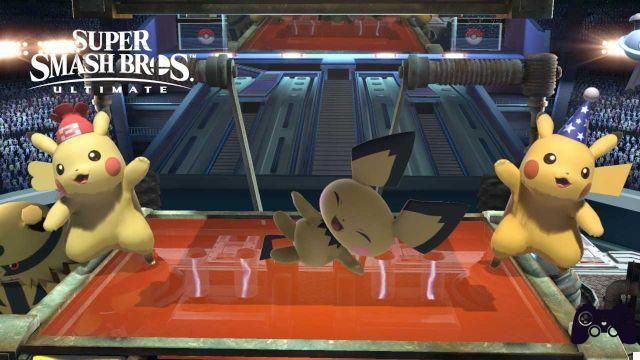
Pichu - Super Smash Bros. Ultimate Character Guide
Among the characters that we will see in this guide to Super Smash Bros. Ultimate, Pichu it is among the most peculiar. All attacks that implement theelectricity cause him a minimal amount of damage, but this character - born in Melee with the express purpose of being used against beginners - returns in Ultimate with a mix of formidable attack and precarious defense.
- Franchise of origin: Pokémon
- Origins: "Pikachu is an evolved Pokémon!", So a non-player character in the first city of Pokémon Gold and Silver made us participate in one of the main gameplay innovations introduced in the double sequel of the very first games. The oviparous nature of all Pokémon - including mammals - continues to perplex us even today, but the possibility of raising litters remains among the most loved features by fans. Pichu evolves into Pikachu by becoming attached to the trainer and leveling up.
- Gameplay: Pichu's special attacks are the same as Pikachu's, except for the aforementioned handicap. There is absolutely not nothing to add, but we give you a tip: if you use Thunder (↓ + B) in the air while you are in motion, you will leave the lightning bolt behind, thus avoiding to raise the percentage of your dammeter!
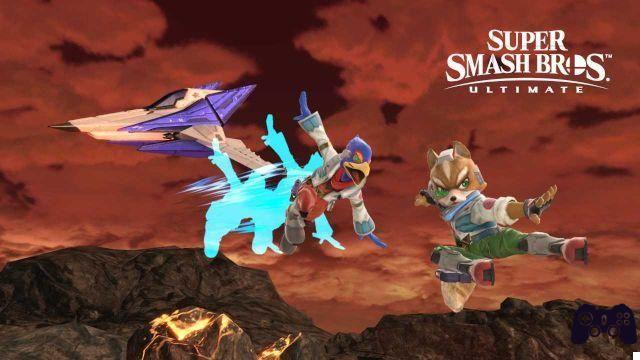
Hawk - Super Smash Bros. Ultimate Character Guide
The second pilot of the Star Fox squadron, the ace of the skies Falco Lombardi, from Melee onwards he joins his partner Fox in all episodes of the series. Predictably, Falco is to Fox as Luigi is to Mario: a better equipped version for aerial combat than the basic version.
- Franchise of origin: StarFox (in Europe StarWing for copyright reasons; the sequel StarFox 64 was called Lylat Wars)
- Origins: Falco debuts in the same game as the protagonist, the very first StarFox. Originally the leader of a gang, the arrogant pilot later becomes an irreplaceable member of the quartet. His huge ego doesn't stop him from even being reliable when it matters. An authentic Thunderbird through and through, since we just talked about it.
- Gameplay: As with Pichu, there is not much to say in Falco's case either. Hawk fire (↑+B) e Hawk ghost (↔ + B, image above) remain nearly identical to Fox's two special moves. The major differences lie in the remaining two. The Blaster Falco's (B) differs from Fox's in slower but more powerful hits, capable of displacing the hit enemy. The Reflector (↓ + B), on the other hand, is more useful for dealing damage without being hit by bullets first, and Hawk throws it forward rather than activating it in place.
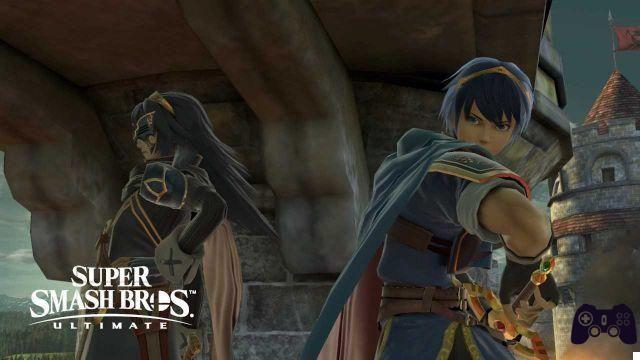
Marth - Super Smash Bros. Ultimate Character Guide
The debut of Marth among the characters that we will analyze in the guide to Super Smash Bros. Ultimate marks the moment in which the series Fire Emblem it was also discovered in the West. Contrary to Nintendo's predictions, the arrival of Marth and Roy in Super Smash Bros. Melee proved to be the best publicity that the series of strategic role-playing games could ever receive.
- Franchise of origin: Fire Emblem
- Origins: Prince of Altea and later "Hero-King" (in that order), Marth was found orphaned by the actions of the dark dragon Medeus. Deprived of his kingdom, exiled and with his sister kidnapped, Marth arms himself with the legendary sword Falchion to lead a rebellion. Lucina is his descendant, who in Fire Emblem Awakening (initially) pretends to be him.
- Gameplay: Marth offers a model on which his cronies Roy, Ike, Lucina and Chrom are based, some more and some less. All of his attacks take advantage of the sword, which in Marth's case is more powerful on the tip. Starting from Slash (B), this is a loadable lunge: when used at full power against a shield, will break it leaving the opponent stunned. Dancing Blades (↔ + B) is a shower of hits that increases as you press B repeatedly. Dolphin Shot (↑ + B) is a standard slash with an upward momentum, while the dynamics of the counterattacks (↓ + B) we will explain it better at the end of the article.
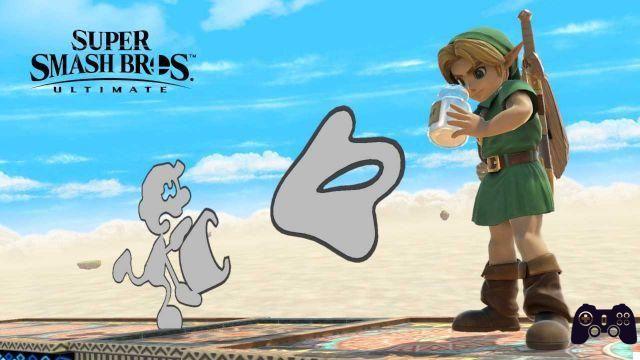
Child Link - Super Smash Bros. Ultimate Character Guide
The first of the two variants of Link on the roster is Child Link, or the incarnation of the character seen in The Legend of Zelda: Ocarina of Time and its sequel Majora's Mask. Armed with both his early game tools like the Kokiri Shield and the Kokiri Sword as well as more advanced weapons like fire arrows, Link Bambino offers a style of play faster, agile ed aggressive of the traditional link.
- Franchise of origin: The Legend of Zelda
- Origins: The gimmick to which this Link owes his green costume is his cultural heritage as an adopted son of the Kokiri, an ethnic group literally composed of eternal Peter Pans biologically destined to never grow up. The death of the Deku Tree pushes him to leave the forest of the "lost children", in an adventure that will lead him to wield the Supreme Sword as his adult self. Despite the traumatic experience in which he explored the ruined kingdom of Hyrule as a child in a grown body, once he returns to his own time he finds himself having to save the parallel dimension of Termina from an even worse catastrophe.
- Gameplay: Link Child can take advantage of good or bad same weapons by Link, but with some differences. L'arc (B), as already mentioned, allows you to shoot fiery arrows, while the bombs (↓ + B) automatically explode once thrown. There pinch (made with three fingers) (Shield + A) of Link Child can also be done at (short) distance.
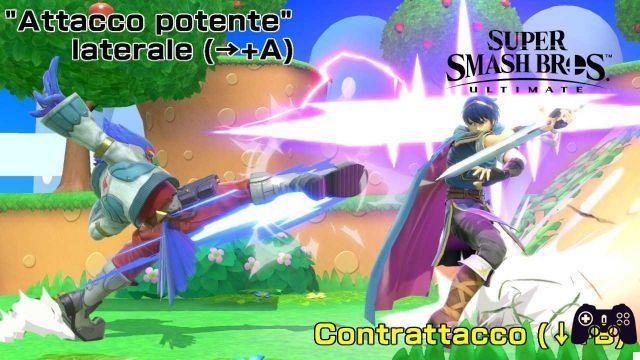
Concluding details, fourth episode: Powerful attacks and counterattacks
As always, at the end of the episode we depart for a moment from the characters to carry out a more general guide of Super Smash Bros. Ultimate. One type of attack that you need to know how to master is that of the so-called Powerful Attacks. The official nomenclature, in reality, can be misleading as it is actually very normal attacks. Unlike standard attacks (A in place), "powerful" ones are carried out tilting the cam in one direction. We have indicated in the image above an example of a powerful attack with the input “⟶ + A”, to differentiate the normal inclination (⟶) from the click (>>) which with A produces a Smash attack.
Powerful attacks, or "tiltTo follow the competitive jargon, they differ widely from one character to another. All physical moves can fall into the trap of a counterattack, usually (but not always, see Peach) associated with the input ↓+B. In short, it consists of a sort of "tripping": whoever wants to set the trap starts the counterattack, and the opponent who - in spite of himself - attacks him at the same moment in which (or very shortly after) the trap is set sees his same force used against him. Abusing it can be counterproductive because characters like Marth can find each other vulnerable if they use the move empty, but striking a counterattack is really satisfying.
And that's all for today: how are you finding yourselves so far? (You can find the summary here.) Please let us know by leaving us a comment below, and don't forget to stay on Holygamerz to not miss any news from the videogame world and beyond.




